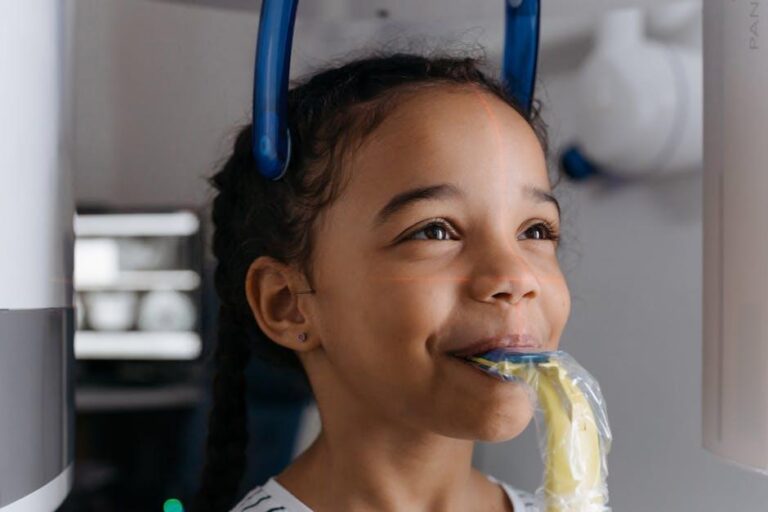1 in 3 Kids Has Dental Problems, Poll Finds – U.S. News & World Report
It’s a startling statistic: according to a recent poll referenced by U.S. News & World Report, 1 in 3 kids in the United States currently suffers from some form of dental problem. This alarming figure highlights growing oral health concerns among children and underscores the importance of pediatric dental care. In this article, we’ll explore the scope of the issue, its causes, consequences, and most importantly, how parents and caregivers can protect their children’s oral health for a brighter, healthier smile.
The Current State of Children’s Oral Health in the U.S.
The poll findings from U.S. News & World Report shed light on the reality faced by millions of families nationwide:
- Prevalence: Approximately 33% of children under 12 have untreated dental problems.
- Common Issues: Tooth decay (cavities), gum disease, and enamel erosion top the list of problems reported.
- Demographic Disparities: Lower-income families and certain racial/ethnic groups experience higher rates of dental issues.
Why Are Dental Problems So Common in Kids?
Several factors contribute to the high prevalence of dental problems among children:
- Poor Oral Hygiene Practices: Kids often resist regular brushing and flossing, or they lack the skills to do it properly.
- Diet and Sugar Intake: Frequent consumption of sugary snacks and drinks promotes tooth decay.
- Limited Access to Dental Care: Some families lack dental insurance or face shortages of pediatric dentists.
- Inadequate Parental Awareness: Not recognizing early signs of dental problems can delay treatment.
Common Dental Problems Affecting Children
Understanding the common dental issues can help parents be vigilant and proactive. The most frequent dental problems in kids include:
| Dental Issue | Description | Typical Age Range |
|---|---|---|
| Tooth Decay (Cavities) | Damage to tooth enamel caused by acid-producing bacteria feeding on sugars. | 2–12 years |
| Gingivitis | Early-stage gum disease characterized by inflammation, redness, and bleeding gums. | 5–12 years |
| Enamel Erosion | Loss of tooth enamel due to acidic foods, drinks, or stomach acid exposure. | Any age during early childhood |
| Malocclusion (Misaligned Teeth) | Irregular positioning of teeth affecting bite and aesthetics. | 6–12 years (when permanent teeth come in) |
Consequences of Untreated Dental Problems
Ignoring children’s dental issues can lead to unwanted complications affecting their overall health and quality of life:
- Pain and Discomfort: Cavities and infections cause toothaches disrupting sleep and concentration.
- Speech and Eating Problems: Poor oral health can impair chewing and speaking abilities.
- Low Self-esteem: Visible dental problems affect children’s confidence and social interaction.
- Potential for Serious Health Risks: Untreated infections may spread, leading to systemic health issues.
Practical Tips for Preventing Dental Problems in Kids
Parents and caregivers play a crucial role in safeguarding children’s oral health. Implementing these simple yet effective strategies can make a difference:
- Start Early: Clean baby’s gums even before teeth appear to promote healthy oral habits.
- Establish a Brushing Routine: Encourage brushing twice daily with fluoride toothpaste starting as soon as the first tooth erupts.
- Limit Sugary Foods and Drinks: Reduce sugar intake to minimize acid attacks on teeth.
- Schedule Regular Dental Check-ups: Visit a pediatric dentist by the child’s first birthday and follow up every six months.
- Make Oral Hygiene Fun: Use colorful toothbrushes, timers, and reward systems to keep kids engaged.
Top Dental Hygiene Tips for Kids
- Use pea-sized amount of fluoride toothpaste.
- Teach proper brushing technique (at a 45-degree angle).
- Floss daily once teeth touch.
- Avoid sharing utensils or cleaning pacifiers with mouth (to prevent bacteria transfer).
- Encourage drinking water, preferably fluoridated.
Case Study: Turning Oral Health Around
Meet Emily, a 7-year-old who faced frequent dental problems, including cavities and gum sensitivity. With her parents’ help, they:
- Established a consistent brushing and flossing routine.
- Cut down on soda and candy consumption.
- Visited a pediatric dentist to receive a fluoride treatment and sealants.
- Used educational apps to make oral care engaging for Emily.
Within six months, Emily experienced significant improvement in her dental health and started to smile confidently at school.
First-Hand Experience: A Parent’s Perspective
Jessica, mother of two boys, shares her journey:
“When I learned that 1 in 3 kids struggles with dental issues, I realized I needed to be more proactive. We worked hard to brush teeth together daily and cut back on sugary drinks. I also found a caring pediatric dentist who explained everything patiently. Now my boys look forward to dental visits, and their smiles have never been brighter.”
Conclusion: Prioritizing Kids’ Dental Health for a Healthy Future
The alarming statistic that one-third of children suffer from dental problems should serve as a wake-up call for parents, educators, and health professionals alike. Pediatric dental care is not just about preventing cavities; it’s about laying the foundation for overall well-being, confidence, and lifelong healthy habits.
By being informed, attentive, and proactive in your child’s oral hygiene, you can drastically reduce their risk of dental problems and give them the gift of a happy, healthy smile. Remember, healthy teeth lead to healthy kids!
Stay informed. Act early. Prioritize dental care.


